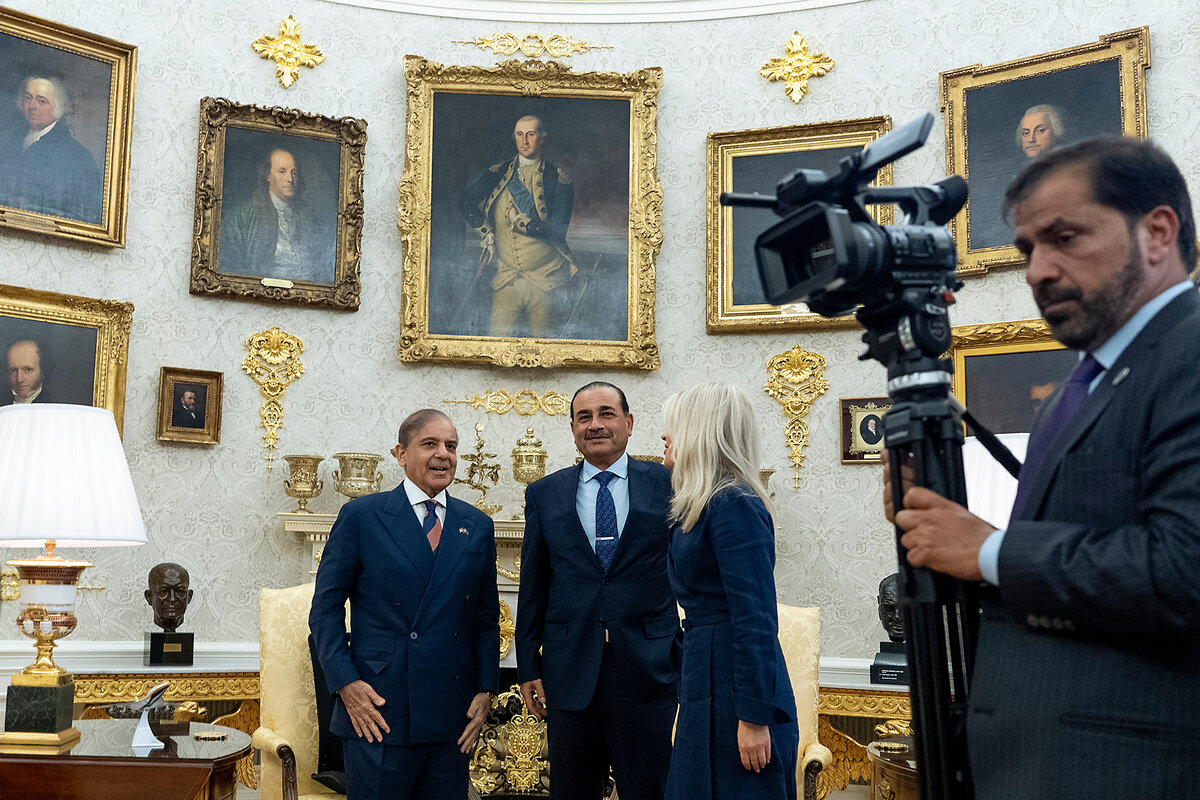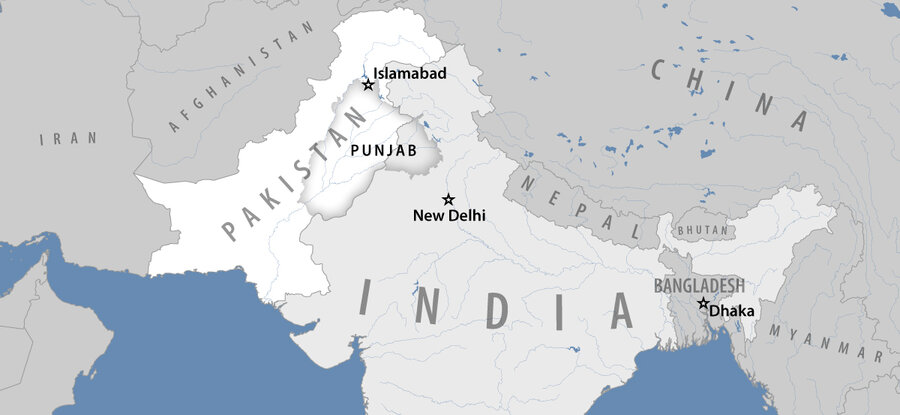Pakistan’s army chief consolidates power, advancing a cycle of military rule
Loading...
| Islamabad
When Field Marshal Asim Munir takes his new position as Pakistan’s first-ever “Chief of Defence Forces” Thursday, he will cement his status as the most powerful man in the country.
The new job was created after parliament passed a constitutional amendment this month that puts Field Marshal Munir also in control of Pakistan’s navy and air force, and grants him lifelong immunity from prosecution.
But though the title is new, there is a sense of history repeating itself. Since gaining independence in 1947, Pakistan has oscillated between civil and military rule. Military dictators have governed directly for 33 of the country’s 78-year history. For the other 45, the military has wielded its influence from the shadows, by making and breaking governments and manipulating politicians.
Why We Wrote This
As the head of Pakistan’s military broadens his authority, the threat of dictatorship looms. Indeed, the country’s history has seen a string of army takeovers. Why is it so hard to break the cycle?
Under Field Marshal Munir’s leadership, the army has manipulated elections and unleashed a brutal crackdown on Pakistan’s most popular political party, the Pakistan Tehreek-e-Insaf (PTI), whose leader, former Prime Minister Imran Khan, is languishing in jail. The army and its backers – euphemistically known as “the establishment” – got a popularity boost following the conflict with India earlier this year. Now, this amendment inches Pakistan closer toward direct military rule.
“What we’re witnessing now,” says historian Ayesha Jalal, “is a military, which has been strong, becoming even stronger.”
The militarization of Punjab
The question of how the military was able to gain such a lasting foothold in Pakistani politics is hotly debated by analysts and historians, with some pointing back to 1858.
The British had just quashed a brutal mutiny in central and eastern India. Seeking to fill its ranks with loyal soldiers, the army turned its sights on the recently annexed province of Punjab.
In remote villages and bustling marketplaces, army recruiters courted local Sikh and Muslim men – considered better suited for war under Britain’s “martial race” theory – with promises of land and social status. By the early 20th century, Punjabis made up of the total armed forces, and the province was known as the “sword arm of India.”
When the British cleaved the subcontinent into two independent countries in 1947, Punjab went mostly to Pakistan. From this highly militarized region emerged the most united and powerful institution in the newly created nation: The army.
Thanks in part to its homogeneity, the army quickly overshadowed Pakistan’s nascent political class, which consisted largely of migrants from what is now India. “It’s a lot easier to consolidate power when you don’t have to manage the equities of disparate groups,” says C. Christine Fair, a professor at Georgetown University’s Center for Peace and Security Studies.
In the decades since, security concerns have bolstered the military’s dominance. A war with India erupted soon after the partition, which made rapid militarization central to state policy and allowed the military to claim a major share of the national budget. Pakistan later joined Cold War alliances that expanded military resources and made the army Washington’s main regional intermediary – a role that continued during the Soviet-Afghan war of the 1980s and later the U.S.-led war on terror.
Under Pakistan’s last military dictator, Pervez Musharraf, the army appeared untouchable – until two rivals joined together to cut the armed forces out of politics.
The struggle for civilian rule
Toward the end of the Musharraf dictatorship, the Pakistan Muslim League (PMLN) and the Pakistan People’s Party (PPP) agreed that if democracy was ever restored, they would refuse to allow the military to use them as pawns. After the restoration of democracy in 2008, the signatories mostly abided by the agreement, heralding Pakistan’s longest period of civilian rule.
The 2013 general election marked the country’s first peaceful transfer of power from one elected civilian government to another. By the time elections were called in 2018, the Pakistani parliament had completed two consecutive terms – another first.
To counter this challenge to its hegemonic control, the military began to cultivate Imran Khan as a third-way candidate, and brought him to power in that same election.
Mr. Khan, a famous cricketer turned philanthropist, campaigned on breaking the cycle of corruption that he claimed had been imposed on Pakistan by the PMLN and the PPP. But Shuja Nawaz, a former distinguished fellow at the Atlantic Council, says if the military had not supported Mr. Khan, “he would not have won the seats that made him prime minister.”
During the ensuing “hybrid regime,” as the media termed Mr. Khan’s tenure, democratic norms were eroded once again. And as tensions began to emerge between Mr. Khan’s government and the army, the latter orchestrated the prime minister’s removal through a vote of no confidence in April 2022.
Since then, the military has been embroiled in a constant tug-of-war with his party, the PTI. The arrest of Mr. Khan by a Pakistani paramilitary force in May 2023 led to widespread rioting, with supporters of the former premier attacking a number of military installations across the country. These riots gave the military the pretext to crack down on PTI leaders and activists.
Now, under the new 27th amendment to Pakistan’s constitution, Field Marshal Munir gets an additional five years in power, control of the country’s nuclear arsenal, and lifelong immunity from prosecution.
For Mr. Nawaz, the way to safeguard Pakistan’s democracy is to create more four-star generals in the army, so that power is not ultimately concentrated in the hands of a single person. “If you have six or seven four-stars, you don’t have that very steep pyramid where the army chief makes all the decisions,” he says. “This is the way of creating a coup-proof military.”
There are others who believe that Pakistan’s democracy depends on political parties sharing power with local communities and educating a new class of grassroots activists about their democratic rights. “Pakistan’s political leadership has always looked at political support as a collateral to win power whenever elections happen,” says political scientist Ayesha Siddiqa. “But once elections are over, they do not invest in political education and connection.”








